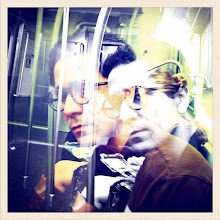It is widely known that the film looks very painterly, especially due to the use of a Zeiss lens developed for NASA satellites, which was designed to capture light at higher speeds and thus reduce depth in perspective and flatten out clarity in low-lit scenes. This, at least, is what Stanley Kubrick used the lens for.
There would not be enough theoretical heft to suggest that the use of such a lens characterizes the film for its pictorial quality if it were only the use of this lens working out the flatness of the film. There are various aspects of Barry Lyndon’s technical structure that broaden the sense of flatness beyond its lush look. It is not just the look, but look, in addition to narrative structure, characterization of players, and the film’s implicit argument on history that compound to flatten the film at various, technical axes. The complete axial platform of flatness not only requires, indeed coerces, the viewer to experience this film as if it were a painting. The totality, or completed feel, inherent to film, furthers this sense of a finished, polished plane.
This sense, however, is conflicted by the insistent narrative that is correlative to, and pulled forward by, actions in sequence. It is as if the film were trying to reconcile the rift between painting and poetry, identified by Plato and expounded by Lessing. Poetry is complicit to time because it is read through time, whereas painting is experienced in a moment. The peculiarity of film, and what Barry Lyndon most elegantly suggests, is that film is a medium engaged in the marriage of these once, irremediable, opposing axes. In film, this conflict becomes the combustibility at its core. The life of Kubrick’s film, furthermore, is invested in articulating a structure that permits these two engines to simultaneously alternate and work against each other, to the benefit of the viewer.
I do not believe that any work of art could ever attain totality. There is indeed too much in the world as we experience it for that. Totality as it is registered in film, on the other hand, is ideational. Films always feel finished. There is enough evidence to suggest that this feeling is actively and aggressively stimulated in Barry Lyndon from beginning to end; so much so that beginning and end are squeezed into a synchronic sense of existence. The dynamic nature of that sense is catalyzed by the contrary, deep historicity of the film and the sheer narrative structure, which repeatedly continues to evoke flatness: a flatness of scene, a flatness of narrative, a flatness of time, a flatness of history that culminates, in so far as a flat thing can culminate, in a democratization of all terms, platitudes, and players. Stanley Kubrick’s Barry Lyndon, nee Redmond Barry, is perhaps the most ostentatious representation of democracy in technique, and totality in film, that has yet been seen.





No comments:
Post a Comment